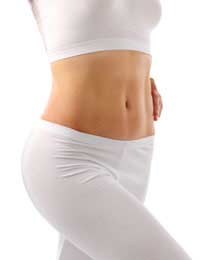Core Muscles: The Best Anti-Ageing Exercise Regime

We all know that exercise is important in our fight against ageing but if you had to choose one form of exercise, then a regime involving exercises to strengthen core muscles would have to be top of the list.
But I already do exercise!
Many of us do not realise just how essential our core muscles are to our health and well-being, as well as our mobility and even our appearance. For example, many people focus on a “washboard” or “six-pack” stomach as a marker for a youthful figure but in fact, these are some of the weakest muscles in your body. They do nothing to actually help hold your skeletal structure so that you maintain your posture and prevent stooping, back pain, flexibility problems and other potential injuries. If you don’t work on strengthening your core muscles, your stomach will always be weak and flabby.You might think that if you run on the treadmill for several hours a week or lift weights regularly, you’re already ticking all the boxes required for anti-ageing exercise but you would be missing out on an essential component of maintaining youthful looks, fitness and longevity: a core muscles regime.
So what’s so special about these ‘core muscles’
The core muscles are a group of 29 muscles across your abdomen, back and pelvis which are key to your body’s ability to function on a daily basis. These muscles include the transverse abdominus – the deepest abdominal muscles, which lie underneath your waist muscles and forming a belt that protects and stabilises your spine; the oblique muscles which are at the side and front of the your abdomen; the rectus abdominus which extends along the front of the abdomen and the erector spinae, which is a collection of three muscles running from your lower back to your neck.Without your core muscles, you would not be able to control your own movements or maintain stability and balance. In particular, your core muscles work to protect your back which is crucial as you age. If your core muscles are not kept strong, then even the simplest action – such as bending down to tie your shoe laces – can cause severe injury and excruciating pain. Not only does core muscle fitness early in life help you fight ageing but even if you have “let things go” a bit and are already into middle age, starting a core muscle exercise regime can actually help to regenerate your muscle and return your physique to its youthful appearance.
Anti-ageing benefits of strengthening your core muscles
Research has shown that people who engage in exercises that strengthen their core muscles are much less prone to injury. One group, for example, showed 42% fewer injuries and even reduced the amount of time lost at work due to injuries by 62% over the course of a year. Even in your every day activities, core strength will improve your balance and stability, making it easier to perform all your daily activities from retrieving a glass from a top kitchen cabinet to swinging a golf club!In addition, core muscle exercises can help to speed up your metabolism and maintain it at your optimum level, meaning that fat burning will continue even at rest and your overall physique will have less excess fat. It also builds muscle strength faster than any other type of gym or aerobic exercise and will also enhance your bone density, which will protect you against osteoporosis – another dreaded demon of ageing.
Core muscle exercises you can try at home
One of the best things about core muscles exercises is that you don’t have to buy special equipment or join a gym to do them. Simple exercises done at home can effectively work your core muscles. Three of the best are:Bridge – looking deceptively simple but very challenging to do properly, this involves you lying on your stomach, resting on your forearms. Then slowly hoist yourself off the ground, so that you are taking all your weight only on your toes and elbows. The key is to keep your back completely flat and to keep your core abdominal muscles tensed (contracted). Do this for 10 seconds then lower to the ground, rest and then repeat. As you get better, challenge yourself by holding yourself up for longer.
Plank – this involves lying on your back with your knees bent and your feet flat on the floor. Tense your abdominal muscles and slowly raise your hips off the floor to the maximum height you can, holding that position for about 10 seconds. Slowly lower your hips back down and repeat. It should be a slow, controlled movement with one spinal vertebrae at a time coming slowly off the floor and then pressing back down again.
Side Plank – more challenging, this involves you lying on your side, propped up on your forearm. Make sure your body is straight so that your knees, hips and shoulders are all aligned. Slowly raise your hips off the floor so that all your weight is being held by your elbow and the side of your feet. Make sure you contract your abdominal muscles and “lift up” from your waist. Repeat on the other side.








